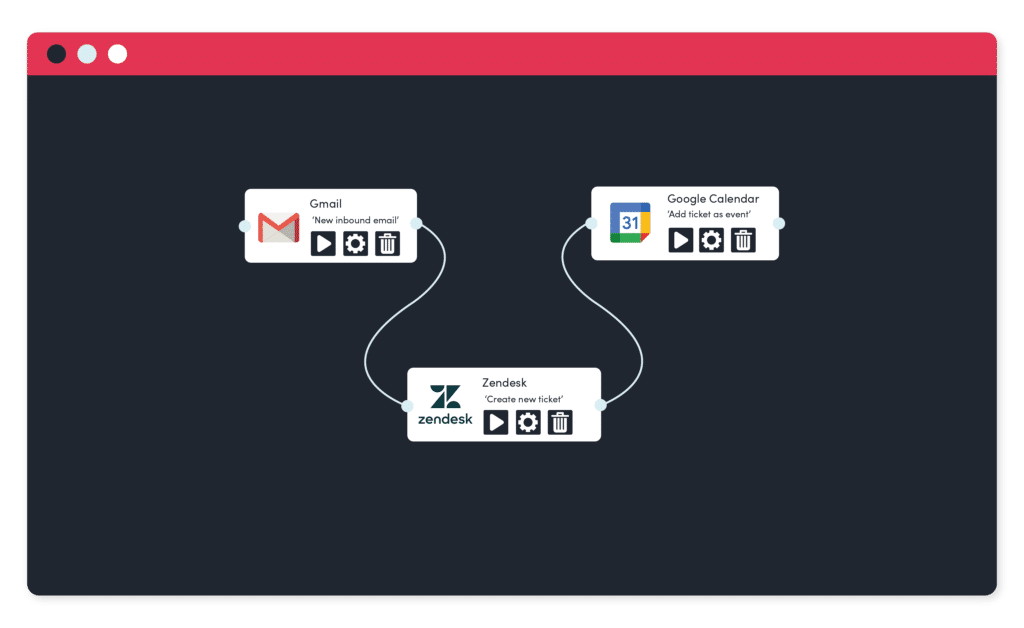
Updated on by Hayley Brown
Each stage of a business, from Startup to Enterprise, has different needs and requirements to be successful. One thing most organisations have in common is the use of multiple different software and applications. As a result, multiple platforms can slow and inhibit business as employees have no access to dynamic data.
Therefore one common business need is integration capabilities.
Building integrations allow your application to connect with other third-party applications to share data. This shared information from different systems also provides you and your end-users with more features and flexibility whilst using your software.
For example, syncing your online eCommerce store to your CRM system. This is a great way to learn about your customers and visitors.
For this type of integration, information relating to customers, products and deal can automatically be added or updated under the associated customer in your CRM. Then your entire team can view and access all these details in one location.
In this short three part series we’ll take a look at integrations for company size from Startup to Enterprise, kicking off with Startup.
Startup: Useful integrations to get going
The smaller the organisation the less likely you are going to have lots of different applications. As the organisation scales more applications will need to be introduced. Therefore it is worthwhile implementing scalable integrated processes early. As the integration foundation can then be built upon with growth.
Let’s paint a picture, our hypothetical SaaS startup called ‘Let’s Do’ is a to-do list type application targeting professionals. The startup aims to ease users day to day tasks with an easy to use interface and unique repeatable processes. The application not only has individual to-do lists but it has team lists where all team members can see each other’s tasks.
The SaaS wants to build integration capabilities so customers can link new website orders to their ‘Let’s Do’ lists as well as new support tickets as attachments within lists. Amongst a myriad of other integration capabilities.
Startup Integration Possibilities
Our startup will require anywhere between 2 to 5 API connectors to get them going. These could consist of:
- Productivity suites such as Google Workspace. These suites provide reliable email accounts, cloud storage and productivity tools – all of which can be used across your team.
- Website or online stores like Shopify or WordPress. Both are capable of listing products, services and information about your organisation that is useful to your customers or users.
- An email marketing tool such as MailChimp helps build communication with your customers or users as well as help generate leads.
- A CRM (customer relationship management) application like HubSpot can help you capture, organise and analyse leads. Track communication with clients and leads and allocate tasks to your team. As well as manage your sales pipeline and customer enquiries via a support ticketing system.
- Accounting applications such as Quickbooks keep track of your organisations finances, such as revenue, billing, expenses and payroll.
- Support Chat/Ticketing applications like Zendesk are useful when engaging with customers online. They are a quick method used to respond to and report any issues users are experiencing.

Other useful applications a startup might use:
- A project management platform such as Trello can help teams manage their projects and tasks.
- Social media content manager like ContentCal can help store recurring content and schedule weekly posts.
Using an embedded iPaaS and it’s out of the box integrations would serve ‘Let’s Do’ well. Our SaaS can build integrations quickly using pre-built templates to speed up business processes. As well as create dynamic data for themselves and ‘Let’s Do’ customers.
For instance, a workflow can be created to add new email subscribers as new leads to your CRM. Triggering a new list item in a sales representative’s ‘Let’s Do’ list. Afterwards, when a new deal has been marked ‘won’ in your CRM trigger your account platform to generate a new invoice and move the list item to complete.
Startup Integration Benefits
Improve customer satisfaction
As a startup or niche, it helps to become stickier by using integrations that allow your customers access to a range of tools. These tools help serve a niche as well it improves stickiness and their experience.
Cross-market yourself
It is beneficial to cross-market yourself by working with other companies. This means you’ll be able to market to each other’s customers. As well as joint marketing opportunities such as webinars, blogs and mutual social media appreciation.
Scale faster
Customers who can get more of their needs met within your ecosystem are likely to remain more loyal and recommend your service more often. Resulting in growth and scaling.
Deepen industry credibility
If you are tackling an industry niche it is effective to become familiar with how that niche operates and what customers’ pain points and needs are. Then it is worthwhile partnering and building integrations within a niche so it will deepen and broaden your network in that specific industry.
Next time we’ll take a look at Established SaaS and integrations that should be building.




